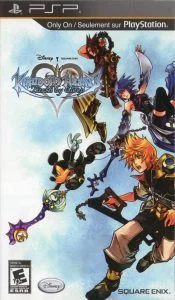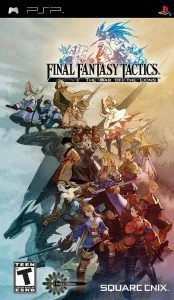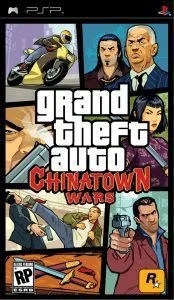Top 100 Best PPSSPP ISO Games Free Download (2025 Update) Latest Version Android & iOS. Looking to relive the golden era of the PlayStation Portable (PSP)? Whether you’re an anime lover, action junkie, or racing fan, these 100 Best PPSSPP ISO Games will transform your emulator into a powerhouse of entertainment. Below is a curated list of the most thrilling, story-rich, and visually immersive PSP ROMs to download today. Let’s dive into the most iconic titles across every genre.
Top 100 Best PPSSPP ISO Games Free Download (2025 Update)

This guide showcases a carefully curated list of the 100 Best PPSSPP ISO Games (PSP ROMs) available for free download—featuring action, racing, RPGs, strategy, and more.
Additional Files You’ll Need to Download
- PPSSPP Gold Apk – PPSSPP Gold Mod Apk Download Latest Version Android & iOS
- Download Naruto Ultimate Ninja Storm 4 PPSSPP ISO (590MB) Highly Compressed
- 100 Best PPSSPP ISO Games (PSP ROMs) free Download
- GB WhatsApp Update 2025 APK Download (Official)
1. Soul Calibur – Broken Destiny
100 Best PPSSPP ISO Games (PSP ROMs) free Download This game preserves all the raging battles and gorgeous visuals, the series has been known to create the most comprehensive fighting experience ever on psp gaming system which comes with highly responsive controls and comfortable gameplay.
With in depth combat, the new single player mode has been specifically crafted for the PSP system which not only challenges the player’s ability, but also improves their fighting skills. By following the footsteps of Soulcalibur IV, Critical Finishing Moves returns, where opponents can be defeated with one spectacular attack.
Download: Soul Calibur – Broken Destiny
Size: 375 MB
2. M.A.C.H (Modified Air Combat Heroes)
100 Best PPSSPP ISO Games (PSP ROMs) free Download As air combatant, race and fight enemy war planes in high speed to earn credits and be awarded with medals of honor.
Download: M.A.C.H Modified Air Combat Heroes
Size: 233 MB
3. FIFA 14 – Legacy Edition
100 Best PPSSPP ISO Games (PSP ROMs) free Download Play and experience the score great goals in FIFA 14. Play as if you are in the real world of football match, the gameplay inspires fans to play with full interest.

FIFA 14 have more football clubs officially licensed, with real players and kits, world tournaments, and gameplay that mirrors real football game world. However the Legacy Edition of FIFA 14 features updated kits and rosters but no updates to gameplay techniques or game modes with this edition.
Download: FIFA 14 – Legacy Edition
Size: 700 MB
5. Tomb Rider – Legend
100 Best PPSSPP ISO Games (PSP ROMs) free Download Lara has to travel around the world in search of legendary ancient artifact.
In the game it was considered to be a restart for the series after the Angel of Darkness was giving poor reception. It was also the first official Tomb Raider game developed by Crystal Dynamics after Core Design stopped it continuous development.
Download: Tomb Raider legend
Size: 1.59 GB
6. Prince Of Persia – The Forgotten Sands
For the fourth time in 2010 Ubisoft release the forgotten sands game into the market apart from the earlier series called sands of time universe, which is set between the first two games in the trilogy and coinciding with the release of Sands of times movie.
Download: Prince of Persia – The Forgotten Sands
Size: 500 MB
7. Naruto Shippuden – Ultimate Ninja Heroes
And now you can establish your dream squad of powerful ninja from the rich universe of Naruto to battle against your friends and trade your player profile through ad-hoc connection.
Elevate your favorite characters to create your own custom ninja. Form your favorite ninja team as it appears in the cartoon or create the ultimate dream team to take on your rivals!
There are more than 15 playable characters and 8 interactive stages to pass through. charge through the ninja ranks to become the ultimate Hokage!
Download: Naruto shippuden – Ultimate Ninja Heroes
Size: 205 MB
8. Crisis Core: Final Fantasy VII
The Final Fantasy VII is one of the popular game that everyone loves to play because the story is focusing on Zack Fair and his adventures as a member of soldier in Shinra Corporation.
Download: Crisis Core: Final Fantasy VII
Size: 1.047 GB
9. Kingdom Hearts: Birth By Sleep
100 Best PPSSPP ISO Games (PSP ROMs) free Download You are to Play as Terra, Ventus, and Aqua – three friends with a common dream who find themselves in the middle of a crisis affecting worlds far beyond their own.
Their destinies will unfold across memorable Disney worlds in three intertwining stories. Secrets will be unraveled and friendships will be tested.
Download: Kingdom Hearts Birth By Sleep
Size: 1445 MB
10. Final Fantasy Tactics: The War Of The Lions
This game is all about the story of a young hero, Ramza Beoulve, where he struggle to protect his beloved ones from the evil Lucavi and it takes place around the War of the Lions time, a conflict that started due to the death of King Ondorria, Lord of Ivalice.
Download: Final Fantasy Tactics: The War Of The Lions
Size: 215 MB
11. Metal Gear Solid: Peace Walker
Metal Gear Solid: Peace Walker is the latest portable entry to the Metal Gear franchise, which is the second canonical Metal Gear title produced for the PSP. Set in Costa Rica, Being a Peace Walker, you are in control like a big Boss as he prepares the rise of Outer Heaven.
Download: Metal Gear Solid: Peace Walker
Size: 1417 MB
12. 100 Best PPSSPP ISO Games (PSP ROMs) free Download Spider – Man 3
Roam anywhere around the city and explore the most massive, detailed New York City ever seen in a Spider-Man game Battle 10 of Spider-Man’s most infamous enemies from the movie and comics, including Sandman and Venom All-new combat system – Empower both Spider-Men with suit-specific powers and abilities. With new attacks and finishers for both Classic and Black-Suited Spider-Man Platform.
Download: Spider – Man 3
Size: 1.4 GB
12. Pro Evolution Soccer 2014
Play in a whole new football game with KONAMI’s PES 2014. With the new stunning FOX Engine which has been combined with a revolutionary soccer system that puts the ball at the heart of the action for the first time. Every element of the game has been rebuilt and now features all-new physics systems, custom team and player AI and a huge leap forward in animations and atmosphere
Download: Pro Evolution Soccer 2014
Size: 1 GB
13. 100 Best PPSSPP ISO Games (PSP ROMs) free Download Ben 10: Alien Force
100 Best PPSSPP ISO Games (PSP ROMs) free Download The game is a fast-paced, 3D-action game based on the hit television series airing on Cartoon Network and offers all-new story content, multiple playable characters and an unlimited combo system with puzzles and challenges that will engage players of all levels.
Download: Ben 10 – Alien Force
Size: 746 MB
14. 100 Best PPSSPP ISO Games (PSP ROMs) free Download Moto GP
Moto GP brings the moto bike racing experience of the classic series to your PSP. You’ll use all licensed motorcycles, racing tracks, and riders — every aspect of the racing game is recreated for you to enjoy. With its high performing engine bikes, bike physics, weather conditions, and a new system upgrade it’s got all the high-speed excitement you need.
Download: Moto GP
Size: 340 MB
15. Fast And Furious: Tokyo Drift
Tokyo Drift will immerse players in the underground world of drift racing. Set in a world related to the movie, yet separate, the game features a ground breaking drift mechanic that makes drifting accessible to both beginners and veteran racing game drivers.
Gameplay features revolutionary new systems like the Drift Indicator that make the Fast & the Furious the most accessible yet realistic drift game ever.
Download: Fast And Furious: Tokyo Drift
Size: 358 MB
16. Call Of Duty: Roads To Victory
100 Best PPSSPP ISO Games (PSP ROMs) free Download This game features are so Immersive Game play designed from the ground up, as an all-new Call of Duty experience. Players will face the full onslaught of the German war machine throughout 14 intense battles.
Multiplayer options for up to 2-6 players to pick-up-and-go in modes such as Death match, Capture the Flag and King of the Hill for quick hitting, over the top action.
Download: Call of Duty – Roads To Victory
Size: 465 MB
17. Ben 10: Protector Of Earth
At first 10-year-old Ben looks like your average, everyday kid, but upon closer look it’s plain to see he’s the world’s youngest action hero stopping evildoers both in Earth and space! With the help of the Omnitrix, Ben can transform into heroic alien forms with extraordinary powers. The evil Vilgax, with the help of Kevin 11 and the Forever Knights, has set in motion a plan to capture the Omnitrix and the world is in danger.
Download: Ben 10 – Protector Of Earth
Size: 472 MB
18. Avatar: The Last AirBender
100 Best PPSSPP ISO Games (PSP ROMs) free Download Bring to life an adventure of intrigue, deceit, and revelation in Avatar The Last Airbender. Play as Aang, Katara, Haru, and Sokka as you grow your team into an unstoppable force making discoveries in a thrilling blend of magic and martial-arts combat.
![]()
Use your fully customizable bending powers to master the four elements of earth, air, water, and fire and explore the beautifully detailed environments of the Avatar nations.
Download: Avatar – The Last Airbender
Size: 124 MB
19. Grand Theft Auto: ChinaTown Wars
After his father’s murder, Huang Lee has a simple mission: deliver an ancient sword to his Uncle Kenny to ensure his family retains control of the Triad gangs of Liberty City.

Huang is a spoiled rich kid who expects everything to run smoothly, but his trip does not go exactly as planned. After being robbed and left to die, he will search for honor, riches and revenge in the most dangerous and morally bankrupt city in the world.
Download: Grand Theft Auto – Chinatown Wars
Size: 548 MB
20. 100 Best PPSSPP ISO Games (PSP ROMs) free Download Iron Man
100 Best PPSSPP ISO Games (PSP ROMs) free Download Marvel super hero movie have found it way into the world of PSP games and other video games platforms, this particular game is based on the storyline of the blockbuster movie..
Download: Iron man
Size: 455 MB
21. 100 Best PPSSPP ISO Games (PSP ROMs) free Download Iron Man 2
The 2010 based movie has makes it way to the PSP platform, this time it is the iron man 2, iron man and war machine join force together to fight there enemies in this series with there unique flying suits and fire power.
Download: Iron Man 2
Size: 664 MB
22. The Simpsons Game
100 Best PPSSPP ISO Games (PSP ROMs) free DownloadHomer, Marge, Bart, and Lisa are all exciting and they have all-new powers to defend their home town from rising chaos.
Download: The Simpsons Game
Size: 690 MB
23. 100 Best PPSSPP ISO Games (PSP ROMs) free Download The Sims 2
Boasting to be one of the most famous psp game, Sims 2 which is a life simulation game just introduce new game engine, with latest features.
Download: The Sims 2
Size: 433 MB
24. 100 Best PPSSPP ISO Games (PSP ROMs) free Download The Sims 2 – Castaway
100 Best PPSSPP ISO Games (PSP ROMs) free Download You can’t find sims in the neighborhood again, and now, welcome to the new outdoor game, where you are to survive, explore to find your way through the tropical island where you will be leaving.
Download: The Sims 2 – castaway
Size: 293 MB
25. 100 Best PPSSPP ISO Games (PSP ROMs) free Download The Sims 2 – Pets
100 Best PPSSPP ISO Games (PSP ROMs) free Download In this version of the sims you will meet new Animal pals, which is a expansion pack for PC and PSP consoles.
Download: Sims 2 – Pets
Size: 761 MB
26. WWE Smackdown Vs Raw 2011
The game empowers players more than ever to define their gameplay experiences in a dynamic and ever-changing WWE. Along the way, gameplay scenarios will change based on player decisions, allowing for more spontaneous WWE action in and out of the ring.
Players will also enjoy a greater level of interactivity and have increased control of their destinies in the game’s popular Road to WrestleMania story-driven mode.
Download: Smackdown Vs Raw 2011
Size: 1258 MB
27. World Soccer Winning Eleven 9
It is intense, fast-paced soccer simulation. Bringing the spirit of international soccer to your PSP, with a virtual soccer experience that’s second to none. Play with the world’s best players and teams , combine with your players strengths to create a Winning Eleven.
The graphics and game play are so realistic that you’ll almost feel like you’re out on the pitch! Advanced referee AI reacts like a real ref – He runs up & down the field, reacting to fouls, penalizing for minor offence and even stepping in to break up a fight. Enhanced Training Mode helps beginners learn soccer basics.
Download: World Soccer Winning Eleven 9
Size: 580 MB
28. X-Men Legends II: Rise Of The Apocalypse
100 Best PPSSPP ISO Games (PSP ROMs) free Download This game introduces the epic storyline of an uneasy alliance between the X-Men and the hated Brotherhood in a fight to reclaim Earth from Apocalypse’s grasp.
Impressive gameplay enhancements include more than double the superpowers and customization capabilities, the debut of several new playable characters, over 100 diverse types of enemies, and a breathtaking range of exotic and real-world environments from the Madri Temple to Egypt.
Download: X-Men Legends II – Rise Of The Apocalypse
Size: 1055 MB
29. Xiaolin Showdown
100 Best PPSSPP ISO Games (PSP ROMs) free Download The Xiaolin showdown game is based on Warner Bros Cartoon and you play as your favourite character Shen Gong Wu.
Download: Xiaolin Showdown
Size: 287 MB
30. Justice League Heroes
Using the extraordinary super powers and expect fighting techniques of the Justice League, players must save humanity from Brainiac’s destruction and even darker forces that are lurking behind the scenes. Unite with Batman, Superman, Green Lantern, The Flash, Wonder Woman and other extraordinary characters to form the most powerful force.
Download: Justice League Heroes
Size: 1.4 GB
31. Transformers: Revenge Of The Fallen
The game makes players, go into a battle for supremacy across the globe as either Autobots or war machines to drive, fly, fight and blast their way through intense, pressure packed levels.
Download: Transformers – Revenge Of The Fallen
Size: 1.08 GB
32. Ultimate Ghost N Goblins
100 Best PPSSPP ISO Games (PSP ROMs) free Download The long awaited fourth installment to the favored franchise sees the triumphant return of valiant knight, Arthur, as he saves the princess from the clutches of evil.
Download: Ultimate Ghost ‘N Goblins
Size: 279 MB
33. Lord Of The Rings: Tactics
It puts players in the universe of Middle Earth, for adventures that go beyond the books and films. This tactical RPG game lets players guide Aragorn, Legolas, Gimli, Frodo, Gandalf and Sauron, among others.
Download: Lord Of The Rings – Tactics
Size: 529 MB
34. 100 Best PPSSPP ISO Games (PSP ROMs) free Download Tekken 6
100 Best PPSSPP ISO Games (PSP ROMs) free Download With massive roster of fighters, each equipped with their own deadly techniques, martial art moves, and attack combinations, TEKKEN 6 will be the best “King of Iron Fist Tournament” to this moment.
Download: Tekken 6
Size: 729 MB
35. Hot Wheels Ultimate Racing
Pass through four main courses in Hot Wheels Ultimate Racing available for PSP handheld console or PPSSPP Emulator for Android, the courses are Death Valley, Jungle, Metropolis, Volcano. In each level of the game you must bypass obstacles or traps that you encounter on your way while racing through the racetracks.
Download: Hot Wheels Ultimate Racing
Size: 90.2 MB
36. Hunter X Hunter: Wonder Adventure – Anime Action Unleashed
Enter the universe of Hunter X Hunter in this immersive anime-based RPG. Fans will love the vibrant combat sequences and familiar character voices. This title brings animated cutscenes and memorable storylines to life.
Download: Hunter X Hunter – Wonder Adventure
Size: 411 MB
37. Naruto Shippuden: Ultimate Ninja Impact – Ninja Warfare in High Gear
Step into Naruto’s sandals and fight in high-octane ninja battles. With dynamic voice acting and stunning visuals, this game captures the essence of the anime with epic boss fights and story-driven missions.

Download: Naruto Shippuden – Ultimate Ninja Impact
Size: 905 MB
38. Dante’s Inferno – Battle Through the Circles of Hell
Assume the role of Dante, a tormented crusader, on a terrifying journey through the inferno to rescue Beatrice’s soul from Lucifer. Face monstrous demons and confront your darkest sins in this intense hack-and-slash epic.

Download: Dante’s Inferno
Size: 1396 MB
39. Army of Two: The 40th Day – Tactical Co-op Mayhem
Take control of Salem and Rios in a war-torn city where co-op strategy is key. Use unique tandem moves and cover mechanics to survive the chaos and execute precision teamwork missions.

Download: Army of Two – The 40th Day
Size: 632 MB
40. YS Seven – A Legendary RPG Adventure
The seventh installment in the YS RPG series features fast-paced combat and engaging character progression. Join Adol in a visually rich world where swordplay meets storytelling.

Download: YS Seven
Size: 440 MB
41. King Kong: The Eighth Wonder Of The World – Movie to Game Brilliance
Experience the cinematic epic through the eyes of both King Kong and Jack. With groundbreaking graphics and immersive audio, this adaptation gives you the thrill of being part of a Hollywood blockbuster.

Delve deeper into the film experience through alternative viewpoints designed to immerse the player into the action and truly “feel” the tension of the adventure.
Download: Perter Jackson’s King Kong
Sizes: 483 MB
42. Sonic Rivals 1 & 2 – Speed Redefined
Race through action-packed levels with your favorite Sonic characters. Evade traps, collect rings, and unlock insane power-ups in this competitive platformer. Part two introduces new characters and advanced game modes.
Download: Sonic Rivals
Size: 114 MB
43. Sonic Rivals 2
100 Best PPSSPP ISO Games (PSP ROMs) free Download Available to the PSP game console, this is the part 2 of Sonic rivals which was developed by Blackbone Entertainment and monitored by Sega Studio of USA.
Download: Sonic Rivals 2
Size: 193 MB
44. Spider-Man 2 – Web-Slinging Adventure Reloaded
Inspired by the hit movie, this action game delivers thrilling web-swinging mechanics and intense street battles. Save the city and face iconic villains with your Spidey senses tingling.

Download: Spider Man 2
Size: 490 MB
45. FIFA Soccer 12 – Realistic Football on the Go
With authentic club licenses and over 500 teams, this edition of FIFA Soccer offers unparalleled realism. Intelligent AI mirrors real-life gameplay, making every match count.

Download: FIFA Soccer 12
Size: 900 MB
46. SpongeBob’s Truth and Square – Dive into a Comedic Adventure
Play as SpongeBob in a memory-filled quest across Bikini Bottom. Solve puzzles, battle robots, and relive hilarious moments from the series.

Download: SpongeBob’s Truth And Square
Size: 1230 MB
47. God of War Series – Chains of Olympus & Ghost of Sparta
Take on the mantle of Kratos in these Greek-mythology-inspired sagas. Use your chained blades to vanquish mythological beasts and uncover secrets of Olympus in one of the PSP’s most revered franchises.

Download: God Of War Chains Of Olympus Iso
Optimized Version: GOW Chains Of Olympus CSO Optimized
Size: 1.2 GG
48. God Of War: Ghost of Sparta
This is another second version of God of war for the PSP console titled ghost of Sparta, which comes with a different story lines from number one above, it is still kratos that plains the main character in this plot of the game, as you play, you can upgrade your sword to kill enemies faster.

Download: God of War: Ghost Of Sparta Iso
Size: 1.1GB
49. Assassin’s Creed: Bloodlines – A Stealth Classic
Continue the journey of Altair as he hunts down Templar remnants in Cyprus. This game bridges the gap between console versions and brings the Assassin’s Creed lore to the palm of your hand.

He has to travel through Cyprus to hunt down the templar leader in other to stop there bad schemes. Blood lines is the first PSP game which tells the story of Altair tracking down the last templars who fled the holy land.
Download: Assassin Creed – Blood Lines
Second Link: Assassin Creed
Size: 540 MB
50. WWE SmackDown VS Raw 2006 – Wrestling Reimagined
Relive legendary matches like WrestleMania, Royal Rumble, and Hell in a Cell. The game features realistic wrestler models, brutal animations, and multiplayer modes.

Download: WWE Smack Down VS Raw 2006
Second Link: WWE Smack Down 2006
Size: 1.3 GB
51. X-Men Origins: Wolverine – Unleash the Beast
Inspired by the film, this action-packed brawler lets you embrace Logan’s feral nature with visceral combat, cinematic visuals, and a gripping storyline.

Download: X-Men Origin Wolverine Iso
Second Link: X – Men Origin
Size: 404 MB
52. Beowulf – The Epic Tale Reborn
Become Beowulf, a brutal warrior driven by pride, in this action-packed journey to defeat monstrous foes and earn gold and glory. Slash your way through chaos with godlike strength.

He is always in the quest to look for Gold and glory because of his lustful and self serving behavior. Beowulf has to embark on a journey to destroy a blood thirsty beasts who have wreck havoc and destroy many things.
Download: Beowulf – the game
Size: 982 MB
53. Need for Speed – Shift & Most Wanted
Burn rubber with these high-octane racing games. Customize your ride, drift around corners, and race to dominate the streets with precision handling and visual flair.

Download: Need For Speed – Shift
Size: 932 MB
54. Need For Speed – Most Wanted
Are you ready to go into the world of need for speed and beat your fellow drivers to be at the top of the race table, power up your driving skills, by drifting and hitting obstacles with different techniques, get ready to explore different modes of the game.
Download: Need For Speed Most Wanted
Size: 175 MB
55. Ghost Rider – Demonic Racing and Slashing
Play as the flame-headed vigilante in this hack-and-slash thrill ride. Inspired by the movie, use your Hellcycle and chains to destroy enemies in style.

So get ready to play the hack and slash game on your PSP Emulator and device.
Download: Ghost Rider
Size: 652 MB
56. GTA – Liberty City Stories – The Origins Begin
Experience the early years of Toni Cipriani in Liberty City. Take on missions, build your empire, and dominate the underworld in this open-world action game.
Download: Grand Theft Auto – Liberty city stories
Size: 555 MB
57. Mortal Kombat – Unchained – Finish Him!
Get ready for fatalities, brutalities, and blood-pumping matches. With multiple fighters and a rich story, this entry in the MK series is a must-play for fans of classic brawlers.
Download: Mortal Kombat Unchained
Size: 916 MB
58. Tekken – Dark Resurrection – The King Returns
Join the King of Iron Fist Tournament with new characters like Lili and Dragunov. Engage in dynamic fights, master combos, and play in multiplayer mode with friends.

The new intro movie lets you dive into the midst of the world of Tekken, this time with ad-hoc multiplayer mode to fight against friends as well as more items to customize your favourite characters. Now you can fight anytime, anywhere. Are you ready to fight with your enemies?
Download: Tekken – Dark Resurrection
Size: 1.33 GB
59. Spider-Man: Web of Shadows & Friend or Foe
Dive into the darker side of Spider-Man with Web of Shadows, and team up with classic villains in Friend or Foe. Both titles offer exciting missions, engaging combat, and web-slinging action.

Download: Spider-Man: Web Of Shadows
Size: 225 MB
60. Spider-Man: Friend or Foe – Web-Slinging Adventure Reimagined
Spider-Man: Friend or Foe is a fast-paced action title that lets players battle through waves of enemies in a stylized comic universe. Spider-Man teams up with former foes to clean up chaos in the city caused by a mysterious villainous force. With cooperative gameplay and unique combat mechanics, it’s a must-download for superhero fans.
- Download Size: 495 MB
- Genre: Action/Adventure

Download: Spider-Man: Friend Or Foe
Size: 495 MB
61. Metal Slug XX – Classic Arcade Shooter Reinvented
Originally known as Metal Slug 7, this revamped edition offers enhanced gameplay, smoother graphics, and new challenges. Metal Slug XX is an action-packed run-and-gun shooter that continues the legacy of the franchise with explosive fun and nostalgic vibes.
Download Size: 196 MB
Genre: Arcade/Shooter

Download: Metal Slug XX
Size: 196 MB
62. Spectral Souls: Resurrection of the Ethereal Empire – Tactical RPG Excellence
This turn-based strategy RPG tests your battle tactics in an epic storyline of war, betrayal, and resurrection. Featuring over 80 hours of gameplay, Spectral Souls is an essential download for fans of deep RPGs and tactical combat.
Download: Spectral Souls: Resurrection of the Ethereal Empire
Genre: Tactical RPG

Download: Spectral Soul: Resurrection Of The Ethereal Empire
63. Tom Clancy’s Splinter Cell – Stealth Action at Its Best
Sam Fisher lands on PSP with this thrilling stealth-action adventure. Featuring immersive missions and classic gadgets, this version of Splinter Cell delivers all the tactical espionage gameplay you’d expect from the franchise.
- Download Size: 1195 MB
- Download: Tom Clancy’s Splinter Cell
- Genre: Action/Stealth

Download: Tom Clancy’s Splinter Cell
Size: 1195 MB
64. Dissidia 012: Duodecim Final Fantasy – Fantasy Fighting Glory
Join an epic war between heroes and villains from the Final Fantasy universe. Featuring 20+ playable characters, jaw-dropping visuals, and fast-paced battles, this title is a dream come true for FF fans.
- Download Size: 1.2 GB
- Download: Dissidia 012: Duodecim Final Fantasy
- Genre: Fighting/RPG

Download: Dissidia 012: Duodecim Final Fantasy
Size: 1.2 GB
65. Resistance: Retribution – Post-Apocalyptic Revenge Mission
Set in the chaotic Resistance universe, you play as James Grayson, a former Marine on a mission of vengeance. Intense third-person action and gripping narrative make this a standout PSP shooter.
- Download Size: 1.35 GB
- Download: Resistance – Retribution
- Genre: Third-Person Shooter

Download: Resistance – Retribution
Size: 1.35 GB
66. Prince of Persia: Revelations – The Sands of Fate Return
The Prince must defy death and fate itself as he battles mythical demons. With enhanced combat mechanics and parkour-inspired gameplay, this entry in the Prince of Persia series is unforgettable.
- Download Size: 1.23 GB
- Download: Prince of Persia – Revelations
- Genre: Action/Adventure

Download: Prince Of Persia – Revelations
Size: 1.23 GB
67. Lord of Arcana – Brutal Monster-Slaying RPG
In Lord of Arcana, players face demonic beasts in high-stakes, real-time battles. With deep customization and an expansive world, this dark fantasy RPG will keep you hooked for hours.
- Download Size: 675 MB
- Download: Lord of Arcana
- Genre: Action RPG

Download: Lord Of Arcana
Size: 675 MB
68. Daxter – A Unique Platforming Adventure
Play as the witty ottsel Daxter in this visually stunning platformer. With the ability to climb, crawl, and zip through levels, Daxter’s agility makes every mission fun and unpredictable.
- Download Size: 1.29 GB
- Download: Daxter
- Genre: Platformer/Action

Download: Daxter
Size: 1.29 GB
69. Metal Gear Solid: Portable Ops + Plus – Tactical Espionage Returns
Experience the origin story of Big Boss in Portable Ops, set between MGS3 and MGS4. With deep storylines, recruiting mechanics, and stealth gameplay, this is a cornerstone PSP title.
- Portable Ops Size: 817 MB
- Portable Ops Plus Size: 660 MB
- Download: Metal Gear Solid – Portable Ops / Plus
- Genre: Tactical Action

Download: Metal Gear Solid – Portable Ops
Size: 817 MB
70. WWE Smackdown Vs Raw 2008 – Wrestling Royalty
With enhanced graphics, new match types, and expanded wrestler rosters, WWE SVR 2008 is still one of the best wrestling games on handheld. Build your superstar and dominate the ring.
- Download Size: 1.32 GB
- Download: WWE Smackdown Vs Raw 2008
- Genre: Sports/Fighting

Download: Metal Gear Solid – Portable Ops Plus
Size: 660 MB
71. Hot Shot Golf: Open Tee Series – Fun on the Fairway
Known for its arcade style and easy pick-up-and-play mechanics, the Hot Shot Golf series is perfect for casual and hardcore golf fans alike.
- Open Tee Size: 402 MB
- Open Tee 2 Size: 746 MB
- Download: Hot Shot Golf – Open Tee 1 & 2
- Genre: Sports/Golf

Download: WWE Smackdown Vs Raw 2008
Size: 1.32 GB
72. Hot Shot Golf: Open Tee
This is a arcade golf game that is known for pickup and play on the PSP.
Download: Hot Shot Golf – Open Tee
Size: 402 MB
73. Hot Shot Golf: Open Tee 2
This is also the extended series of hotshots golf game with same or similar features to the first version.
Download: Hot Shot Golf – Open Tee 2
Size: 746 MB
74. Race Driver 2006 – Ultimate Driving Simulator
This PSP-exclusive racing game features a wide variety of real-world tracks and vehicles. Race Driver 2006 brings high-speed realism to your handheld.
- Download Size: 900 MB
- Download: Race Driver 2006
- Genre: Racing/Simulation

Download: Race Driver 2006
Size: 900 MB
75. Wipeout Pulse – Futuristic Racing Madness
The second installment in the Wipeout series for PSP offers anti-gravity racing, stunning visuals, and heart-pounding speed. A must-download for fans of futuristic racers.
- Download Size: 205 MB
- Download: Wipeout Pulse
- Genre: Racing/Sci-Fi

Download: Wipeout Pulse
Size: 205 MB
76. Puzzle Quest: Challenge of the Warlords – Brain Meets Brawn
An innovative puzzle-RPG hybrid, Puzzle Quest blends match-3 gameplay with a deep fantasy storyline. A refreshing take on the puzzle genre.
- Download Size: 78 MB
- Download: Puzzle Quest – Challenge of the Warlords
- Genre: Puzzle/RPG

Download: Puzzle Quest – Challenge Of The War Lord
Size: 78 MB
77. Half-Minute Hero – Speed is Everything
Defeat evil in just 30 seconds! This fast-paced RPG throws traditional gameplay out the window for frantic, time-based challenges.
- Download Size: 120 MB
- Download: Half-Minute Hero
- Genre: Action RPG

Download: Half Minutes Hero
Size: 120MB
78. Virtua Tennis: World Tour – Serve Up A Winner
Create your own tennis star and rise to the top in Sega’s acclaimed tennis sim. Smooth controls and addictive gameplay make this a fan-favorite.
- Download Size: 154 MB
- Download: Virtua Tennis – World Tour
- Genre: Sports/Tennis

Download: Virtua Tennis – World Tour
Size: 154 MB
79. Syphon Filter: Logan’s Shadow – Tactical Espionage Reinvented
Building on the success of Dark Mirror, Logan’s Shadow introduces underwater combat and cinematic storytelling. A pinnacle of action on PSP.
- Download Size: 1.1 GB
- Download: Syphon Filter – Logan’s Shadow
- Genre: Action/Shooter

Download: Syphon Filter – Logan’s Shadow
Size: 1.1 GB
80. LocoRoco 2 – A Musical Platforming Marvel
The evil Moja army is back and spreading darkness. Help the LocoRoco restore life and color using music and physics-based gameplay in this vibrant, joyful sequel.
- Download Size: 1512 MB
- Download: LocoRoco 2
- Genre: Puzzle/Platformer

Download: LocoRoco 2
Size: 1512 MB
81. Burnout Legends – Destructive Arcade Racing
Burnout Legends compiles the best moments from the console series into one explosive PSP package. Use your car as a weapon and take out the competition in high-octane crashes.
- Download Size: 247 MB
- Download: Burnout Legends
- Genre: Racing/Arcade

Download: Burnout Legends
Size: 247 MB
82. PixelJunk Monsters Deluxe – Defend, Build, Survive
In PixelJunk Monsters Deluxe, your mission is to guard your home base from waves of vicious monsters. Between attacks, collect coins and jewels from defeated enemies to build powerful towers and research advanced weaponry. This real-time tower defense game demands quick thinking and tactical planning.
![]()
Download: PixelJunk Monsters Deluxe
Size: 97 MB
83. LittleBigPlanet – Create and Share Adventures
LittleBigPlanet brings the creative magic of “Play, Create, Share” to the PSP. Dive into a new Sackboy adventure through over 35 levels, collecting costumes and creation materials along the way. With the intuitive POP-IT tool, you can design your own stages and share them online or via ad-hoc mode.

Create your own levels and challenges with the easy to use POP-IT tool. Once complete, Share your creations in ad-hoc mode or post them to the community pool in infrastructure mode.
Download: Little Big Planet
Size: 1.2 GB
84. Disgaea: Afternoon of Darkness – Tactical RPG Brilliance
This remastered strategy RPG features a charming story, hilarious characters, and tactical turn-based battles. Disgaea: Afternoon of Darkness adds multiplayer functionality, new Geo Cubes for battlefield effects, and high-resolution visuals tailored for the PSP.

Geo Cubes add special effects in the battlefield, completely shifting the balance in the blink of an eye. The first time for multiplayer in the Disgaea series.
Download: Disgaea Afternoon Of Darkness
Size: 426 MB
85. Ridge Racer – High-Speed Arcade Racing
Ridge Racer is a fast-paced racing experience, featuring Time Attack Mode, Wireless Battle Mode for up to 8 players, and classic courses from the franchise’s rich history. Unlock secret vehicles and blaze your way to the top in World Tour Mode.

Drive in style and rise through the ranks to unlock hidden bonuses in World Tour Mode. Features popular race courses from arcade, classic, Rave Racer and the entire Ridge Racer series.
Download: Ridge Racer
Size: 568 MB
86. Tactics Ogre: Let Us Cling Together – Strategic War Drama
A reimagined masterpiece from Yasumi Matsuno, this tactical RPG places you in a world of political tension and epic warfare. Your decisions shape the outcome of the Walister resistance as you navigate a complex narrative.
Download: Tactics Ogre – Let Us Cling Together
Size: 1122 MB
87. Lumines – Rhythmic Puzzle Gaming
Stack blocks to the beat and immerse yourself in a visually stunning puzzle game. Lumines combines music and gameplay in an addictive loop. Jam with friends wirelessly and unlock new skins, visuals, and soundtracks.
Download: Lumines
Size: 144 MB
90. Field Commander – Real-Time Tactical Combat
Enter a country torn apart by civil war in Field Commander, a military strategy game with real-time command mechanics. Control your units across a war-ravaged landscape and bring order to the chaos.

A once proud country is shattered into thirteen starving states fighting for their survival, and you realize the fate of your country’s destiny lies in the palm of your hands, you must take to the field in an attempt to defeat the enemy and bring peace.
Download: Field Commander
Size: 860 MB
91. FIFA Street 2 – Urban Soccer Action
FIFA Street 2 ups the ante with new modes, tighter gameplay, and flashier tricks. Play against the AI or friends in gritty street environments and dominate the world of freestyle football.

Download: FIFA Street 2
Size: 208 MB
92. MotorStorm: Arctic Edge – Off-Road Mayhem in the Snow
Blast through icy tundra tracks with big rigs, bikes, and more in MotorStorm Arctic Edge. This PSP adaptation delivers thrilling off-road racing with dynamic weather effects and high-octane vehicles

Download: MotorStorm Arctic Edge
Size: 510 MB
93. Gran Turismo – Realistic Racing on PSP
The legendary Gran Turismo franchise hits the PSP with hundreds of licensed cars, breathtaking visuals, and realistic physics. Enjoy pure racing simulation anytime, anywhere.

Download: Gran Turismo
Size: 955 MB
94. Test Drive Unlimited – Open-World Racing Adventure
Explore open roads in Test Drive Unlimited. Visit luxury dealerships, test vehicles, and compete in online challenges. Customize each car to your liking and trade performance parts to build your dream garage.

Download: Test Drive Unlimited
Size: 912 MB
95. FlatOut: Head On – Total Destruction Racing
FlatOut: Head On delivers maximum carnage with destructible environments, vehicle damage, and ragdoll physics. Smash opponents, race aggressively, and enjoy the chaos.

Download: Flatout – Head On
Size: 360 MB
96. Sega Rally Revo – Master the Terrain
Brace yourself for off-road thrills in Sega Rally Revo. Adapt to changing terrain like mud, snow, and gravel while driving licensed rally cars at full throttle in highly responsive physics-based gameplay.

Download: Sega Rally Revo
Size: 164 MB
97. Street Supremacy – Urban Racing Warfare
Join a crew and battle rival racers for street dominance in Tokyo. Street Supremacy is all about navigating heavy traffic and winning intense one-on-one challenges to earn your crew’s respect.

Download: Street Supremacy
Size: 386 MB
98. GripShift – Puzzle-Racer Hybrid
GripShift mixes racing and platforming in a unique experience. With dozens of circuits, 8 bonus games, and multiplayer support, the fun never stops. Enjoy Penguin Bowling, Soccer Crazy, and more.

Download: Gripshift
Size: 127 MB
99. Pursuit Force – Action-Packed Justice
Take down five violent gangs across five districts. Pursuit Force combines vehicular combat, high-speed chases, and on-foot missions in an action-packed storyline filled with adrenaline-pumping objectives.

Download: Pursuit Force
Size: 690 MB
100. Pursuit Force: Extreme Justice – Bigger Battles, New Characters
As the top-ranking commander, lead four new operatives and bring justice to Capital City. This sequel expands on the original with more characters, new districts, and explosive gameplay.

Download: Pursuit Force – Extreme Justice
Size: 848 MB
✅ Why Play PPSSPP Games Today?
- Portability: Enjoy your favorite PSP games on mobile or PC.
- Performance Boost: Enhanced frame rates and resolution options.
- Customization: Save states, control mapping, and cheat codes.
- Massive Library: Choose from hundreds of classics and hidden gems.
📝 Final Thoughts on the Best PSP Games for PPSSPP
Whether you’re a die-hard racing fan, a tactical RPG lover, or someone who enjoys creating levels and sharing them, this collection has something for everyone. With free ISO downloads and optimized performance using the PPSSPP emulator, reliving your favorite PSP games has never been easier.
Be sure to bookmark this list and come back for more as we update it with new downloadable titles. Enjoy the best of PSP gaming in 2025 and beyond!





2 Comments
Merci 😘
Merci 😚